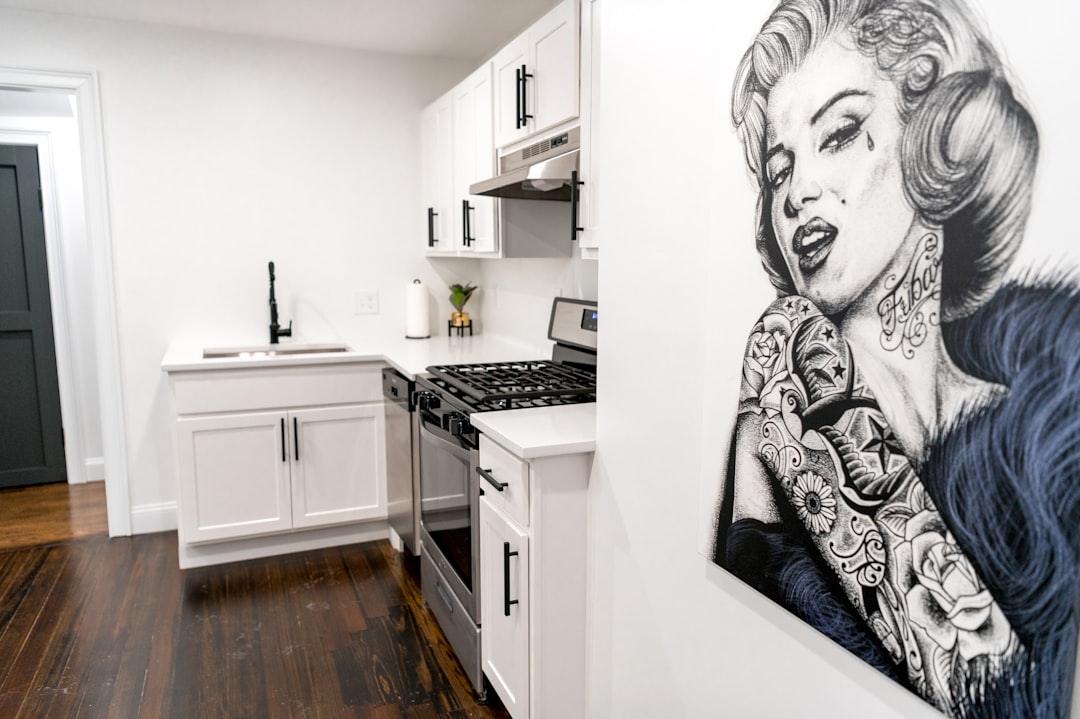Catching people’s attention & getting your point across quickly are essential in today’s hectic world. Posters can help in this situation. Being able to captivate an audience & make a lasting impression makes posters an effective tool for marketing and communication.
Key Takeaways
- Eye-catching posters are important for grabbing attention.
- Best dimensions depend on where the poster will be displayed.
- Choosing the right color scheme is crucial for impact.
- Typography can make or break a poster’s memorability.
- High-quality images and graphics enhance a poster’s effectiveness.
A well-designed poster may make all the difference when it comes to marketing a cause, promoting an event, or promoting a product. Size counts when it comes to posters. The effectiveness of your poster can be significantly impacted by its dimensions. Evaluate the area where the poster is going to be hung. Different sizes and aspect ratios are needed depending on whether it will be hung on a wall, shown on a billboard, or distributed as a flyer.
The typical size for wall posters is 24 by 36 inches, which gives you ample room to include all the information you need without overwhelming the viewer. On the other hand, you will need to think about a much larger size if you are making a poster for a billboard in order to guarantee visibility from a distance. Colors have the ability to elicit feelings and have an impact on behavior. Selecting a color scheme for your poster design that complements your brand and message is crucial.
When choosing colors, take into account the feelings you wish to arouse in your viewers. For instance, vivid and strong colors like red, orange, & yellow can work well when advertising a lively and fun event. Conversely, muted and neutral colors like black, gray, & blue might be more appropriate if you’re trying to convey a message that is more somber & professional. Typography is essential to a poster’s effectiveness.
| Poster Dimensions | Impact Score | Readability Score | Engagement Score |
|---|---|---|---|
| 18×24 inches | 8.5 | 9.2 | 7.8 |
| 24×36 inches | 9.3 | 8.5 | 9.1 |
| 30×40 inches | 9.8 | 8.9 | 9.5 |
The choice of fonts can significantly impact the overall design. It’s critical to choose fonts that both enhance the poster’s overall aesthetic and are simple to read. To avoid cluttering and confusing the design, try not to use too many different fonts. At most, use two or three fonts, and make sure they are readable from a distance.
Due to their legibility and simplicity, sans-serif fonts are frequently a safe choice for posters. A poster’s message can be substantially improved by adding visuals. Using excellent images that are pertinent to the message can enhance the engagement and memorability of a poster, regardless of whether it is a picture, illustration, or graphic.
Make sure the photos you choose are high-resolution and appropriately sized to fit the poster. Images that are pixelated or blurry can lower the design’s overall quality. Also, confirm that the pictures you select complement the poster’s theme and tone. An information hierarchy should be evident in a well-designed poster.
To produce a unified and eye-catching design, the text and visual components should cooperate. Don’t stuff the poster with too many images or text. Instead, concentrate on the main idea and amplify & reinforce it with images. Make the text easier to read by breaking it up with headings, subheadings, and bullet points. In a variety of locations, including outdoor ones like bus stops and billboards as well as indoor ones like offices and schools, posters can be exhibited.
It’s crucial to design the poster with the platform for display in mind. You can add more details and information to indoor posters and be more specific. But simplicity is essential for outdoor posters. Make sure the poster’s message is concise and easy to understand because passersby only have a few seconds to look at it. Social media can increase a poster’s reach in the current digital era. You can share your poster with a larger audience by using social media sites like Facebook, Instagram, & Twitter.
Use resources like Linkinbio to point viewers to pertinent content, like product websites or event registration pages. Links allow you to increase interaction with your poster and direct traffic to the location of your choice within social media posts. To increase the poster’s reach even more, ask visitors to share it on their own social media accounts.
A statement that encourages viewers to take action is known as a call-to-action. A well-written call to action can promote participation, whether it’s to buy a product, attend an event, or donate to a cause. Make sure that the language in your calls to action is clear and succinct. Ascertain that the audience can easily comprehend your expectations and the steps involved in achieving them.
Say “Visit our website to learn more and register now” as an example, rather than “Visit our website for more information.”. Careful consideration of many different elements is necessary when designing a poster. A poster can be made to have the most impact by choosing the appropriate size, color scheme, typography, visual elements, and call-to-action. Make sure your design is appropriate for the particular platform on which the poster will be shown, and use social media to spread the word about it. You can effectively convey your message and make an impression on your audience with a well-designed and visually appealing poster.
If you’re looking for more information on poster dimensions in pixels, you might find this article from Linkinbio.digital helpful. They provide a comprehensive guide on how to optimize your poster designs for digital platforms. From understanding the ideal pixel dimensions to choosing the right file format, this article covers it all. Check it out here and gain valuable insights to create visually stunning posters that make an impact online. Additionally, if you’re new to the world of digital design, Linkinbio.digital also offers a beginner’s guide to get you started, which you can find here.
FAQs
What are poster dimensions in pixels?
Poster dimensions in pixels refer to the number of pixels that make up the width and height of a digital poster image. It determines the size and resolution of the poster.
What is the standard poster size in pixels?
There is no standard poster size in pixels as it varies depending on the intended use and display medium. However, common poster sizes in pixels include 1080 x 1350 pixels for Instagram, 1920 x 1080 pixels for Facebook, and 2480 x 3508 pixels for A4 print posters.
What is the recommended resolution for poster images?
The recommended resolution for poster images is 300 pixels per inch (PPI) or higher. This ensures that the image is clear and sharp when printed or displayed on high-resolution screens.
What file format should I use for poster images?
The recommended file format for poster images is JPEG or PNG. JPEG is ideal for photographs and images with many colors, while PNG is best for images with transparent backgrounds or simple graphics.
Can I resize a poster image without losing quality?
Resizing a poster image may result in a loss of quality, especially if the image is enlarged. However, using image editing software such as Adobe Photoshop can help minimize the loss of quality by using interpolation techniques to add pixels to the image.

